Aesthetics is the branch of philosophy concerned with the nature of beauty and the nature of taste and, in a broad sense, incorporates the philosophy of art. Aesthetics examines the philosophy of aesthetic value, which is determined by critical judgments of artistic taste; thus, the function of aesthetics is the "critical reflection on art, culture and nature".
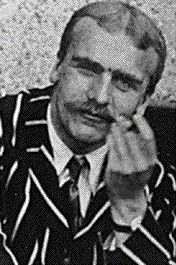
John Burdon Sanderson Haldane, nicknamed "Jack" or "JBS", was a scientist born in Britain who later moved to India and took citizenship there, who worked in physiology, genetics, evolutionary biology, and mathematics. With innovative use of statistics in biology, he was one of the founders of neo-Darwinism. Despite his lack of an academic degree in the field, he taught biology at the University of Cambridge, the Royal Institution, and University College London. Renouncing his British citizenship, he became an Indian citizen in 1961 and worked at the Indian Statistical Institute until his death in 1964.
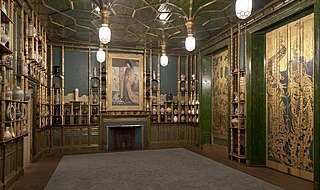
Aestheticism was an art movement in the late 19th century that valued the appearance of literature, music, fonts and the arts over their functions. According to Aestheticism, art should be produced to be beautiful, rather than to teach a lesson, create a parallel, or perform another didactic purpose, a sentiment best illustrated by the slogan "art for art's sake." Aestheticism flourished in the 1870s and 1880s, gaining prominence and the support of notable writers such as Walter Pater and Oscar Wilde.

Richard Burdon Haldane, 1st Viscount Haldane, was a British lawyer and philosopher and an influential Liberal and later Labour politician. He was Secretary of State for War between 1905 and 1912 during which time the "Haldane Reforms" of the British Army were implemented. As an intellectual he was fascinated with German thought. That led to his role in seeking detente with Germany in 1912 in the Haldane Mission. The mission was a failure and tensions with Berlin forced London to work more closely with Paris.

Analytical Thomism is a philosophical movement which promotes the interchange of ideas between the thought of Thomas Aquinas, and modern analytic philosophy.

Edmund Brisco "Henry" Ford was a British ecological geneticist. He was a leader among those British biologists who investigated the role of natural selection in nature. As a schoolboy Ford became interested in lepidoptera, the group of insects which includes butterflies and moths. He went on to study the genetics of natural populations, and invented the field of ecological genetics. Ford was awarded the Royal Society's Darwin Medal in 1954. In the wider world his best known work is Butterflies (1945).
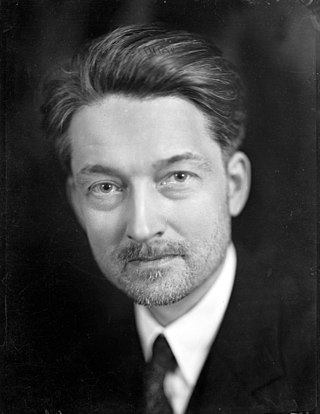
Jacques Maritain was a French Catholic philosopher. Raised as a Protestant, he was agnostic before converting to Catholicism in 1906. An author of more than 60 books, he helped to revive Thomas Aquinas for modern times, and was influential in the development and drafting of the Universal Declaration of Human Rights. Pope Paul VI presented his "Message to Men of Thought and of Science" at the close of Vatican II to Maritain, his long-time friend and mentor. The same pope had seriously considered making him a lay cardinal, but Maritain rejected it. Maritain's interest and works spanned many aspects of philosophy, including aesthetics, political theory, philosophy of science, metaphysics, the nature of education, liturgy and ecclesiology.

Desmond Macready Chute (1895–1962) was an English poet and artist, who became a Catholic priest in 1927.

David William Gentleman is an English artist. He studied art and painting at the Royal College of Art under Edward Bawden and John Nash. He has worked in watercolour, lithography and wood engraving, at scales ranging from platform-length murals for Charing Cross Underground Station in London to postage stamps and logos.
This is an alphabetical index of articles about aesthetics.

Morris Weitz "was an American philosopher of aesthetics who focused primarily on ontology, interpretation, and literary criticism". From 1972 until his death he was Richard Koret Professor of Philosophy at Brandeis University.

Francis Jourdain was a French painter, furniture maker, interior designer, maker of ceramics, and other decorative arts, and a left-wing political activist.

Cartesianism is the philosophical and scientific system of René Descartes and its subsequent development by other seventeenth century thinkers, most notably François Poullain de la Barre, Nicolas Malebranche and Baruch Spinoza. Descartes is often regarded as the first thinker to emphasize the use of reason to develop the natural sciences. For him, philosophy was a thinking system that embodied all knowledge.
John Joseph Haldane is a British philosopher, commentator and broadcaster. He is a former papal adviser to the Vatican. He is credited with coining the term 'analytical Thomism' and is himself a Thomist in the analytic tradition. Haldane is associated with The Veritas Forum and is the current chair of the Royal Institute of Philosophy.
Theopoetics in its modern context is an interdisciplinary field of study that combines elements of poetic analysis, process theology, narrative theology, and postmodern philosophy. Originally developed by Stanley Hopper and David Leroy Miller in the 1960s and furthered significantly by Amos Wilder with his 1976 text, Theopoetic: Theology and the Religious Imagination.

Sir Stephen Harold Spender was an English poet, novelist and essayist whose work concentrated on themes of social injustice and the class struggle. He was appointed U.S. Poet Laureate Consultant in Poetry to the Library of Congress in 1965.
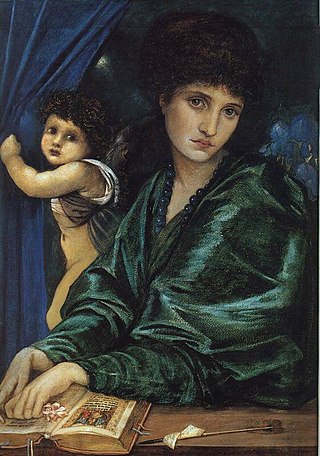
Maria Zambaco, born Marie Terpsithea Cassavetti, was a British artist's model of Greek descent, favoured by the Pre-Raphaelites. She was also a sculptor.
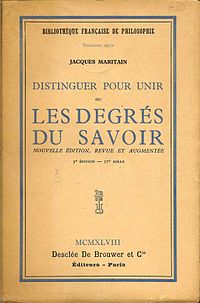
The Degrees of Knowledge is a 1932 book by the French philosopher Jacques Maritain, in which the author adopts St. Thomas Aquinas’s view called critical realism and applies it to his own epistemological positions. According to critical realism, what we know is identical with what exists, and to know a thing is for its ‘essence’ to exist immaterially in the mind. In The Degrees of Knowledge, Maritain applies this view as he seeks to explain the nature of knowledge, not only in science and philosophy, but also in religious faith and mysticism. Maritain argues that there are different ‘kinds’ and ‘orders’ of knowledge and, within them, different ‘degrees’ determined by the nature of the thing to be known and the ‘degree of abstraction’ involved. The book is divided into two parts: Part one discusses the degrees of knowledge for science and philosophy – or ‘rational knowledge,’ and part two discusses the degrees of knowledge for religious faith and mysticism – or ‘super-rational knowledge.’

The Person and the Common Good is a 1947 book about social philosophy by the French philosopher Jacques Maritain.

Haldane MacFall was a British Army officer who became an authoritative art critic, the author of several works of art history, an essayist and a novelist. He illustrated many of his own works, as well as bookplates and cover art for others, and exhibited at the Royal Academy.
















